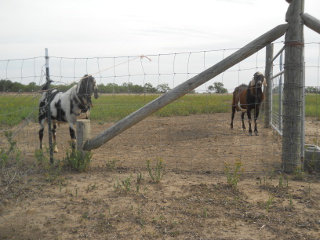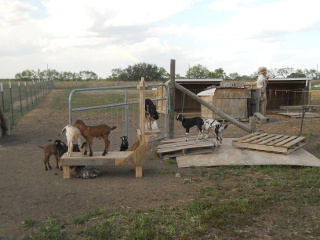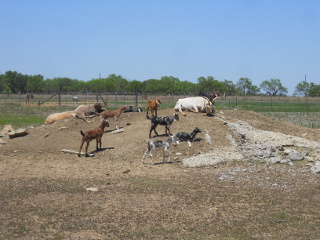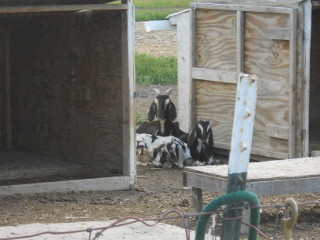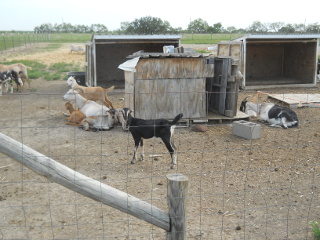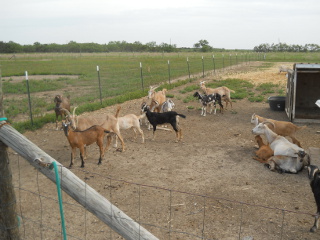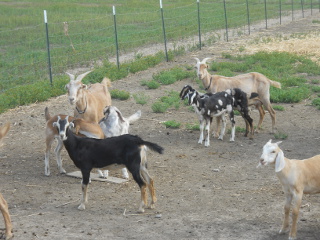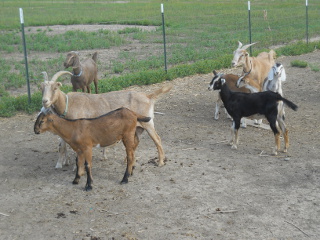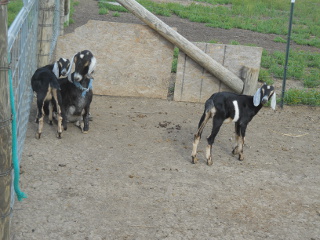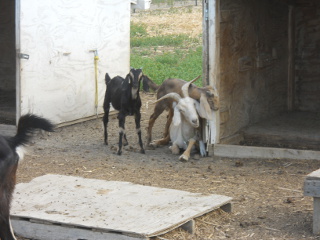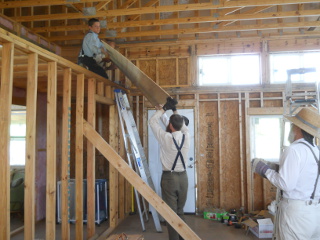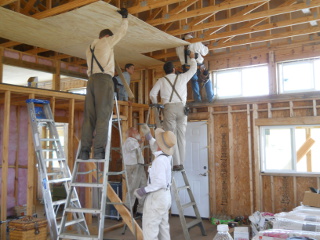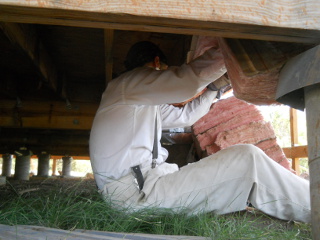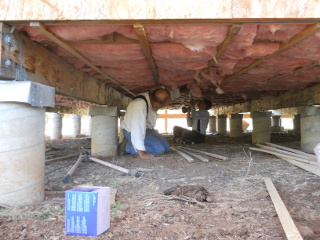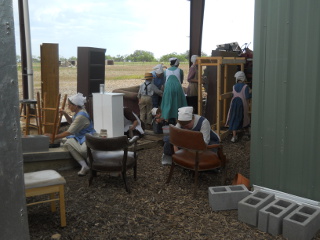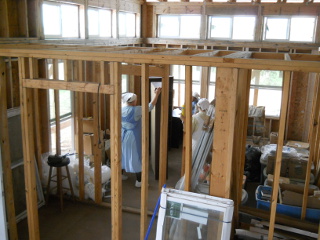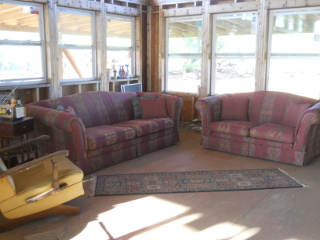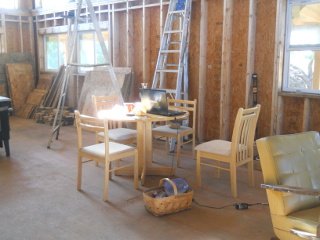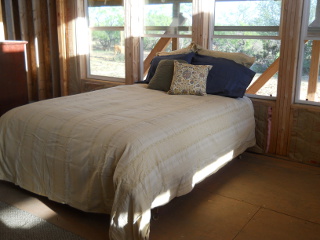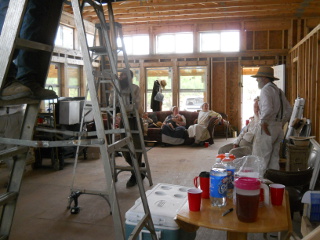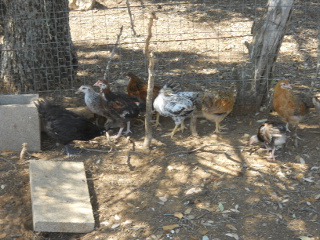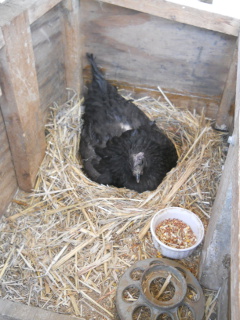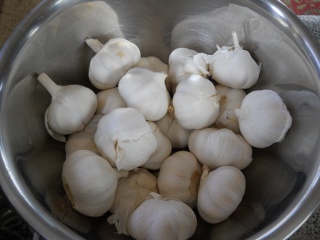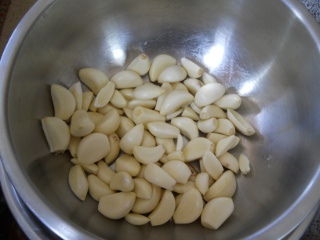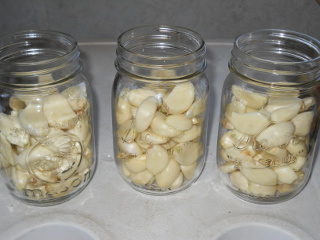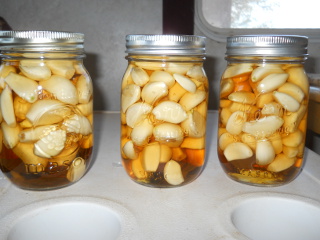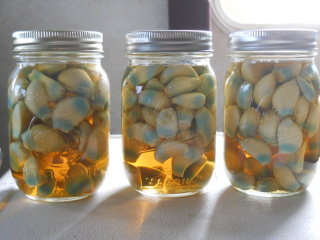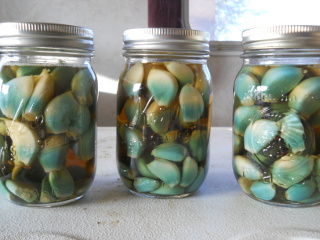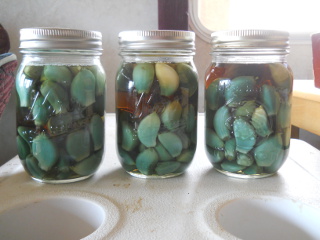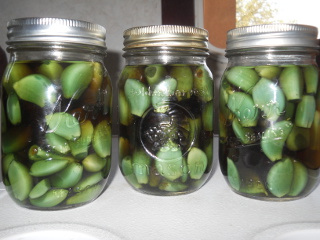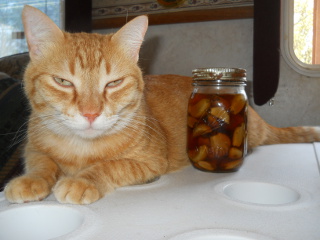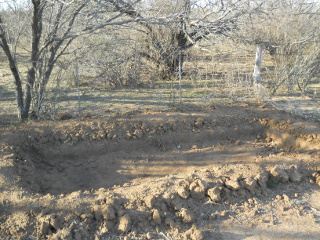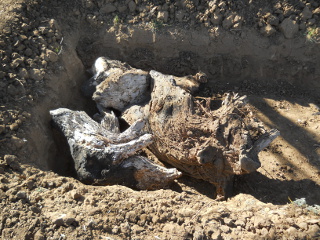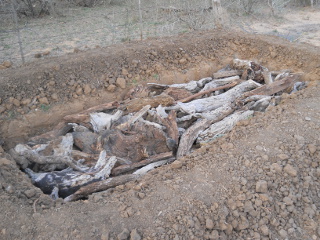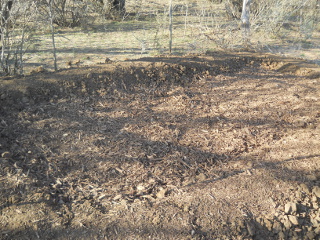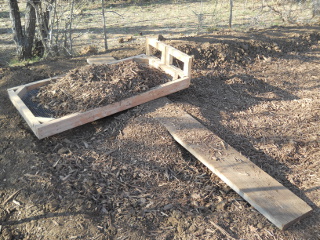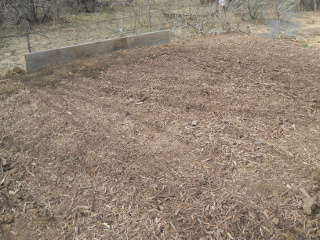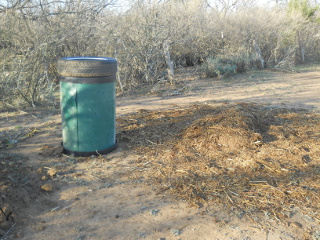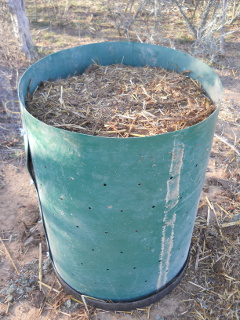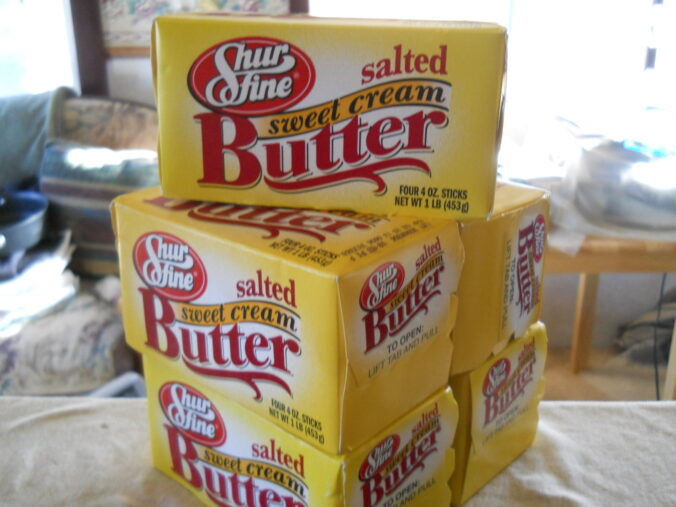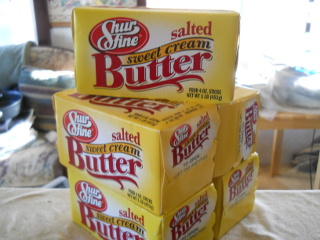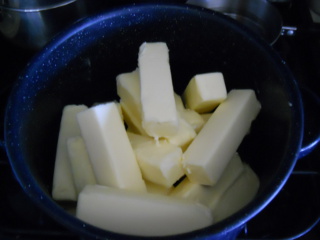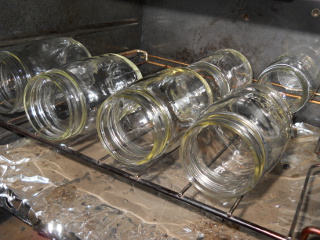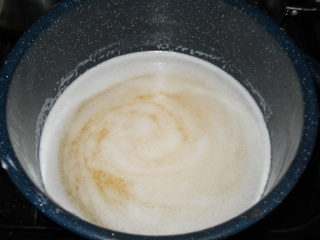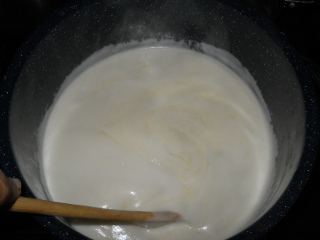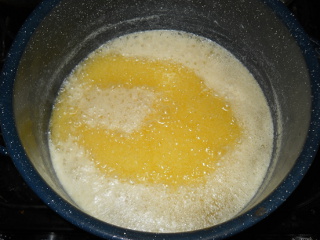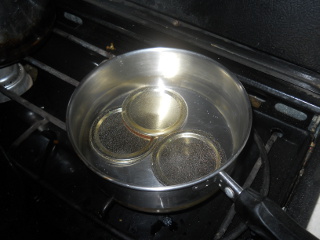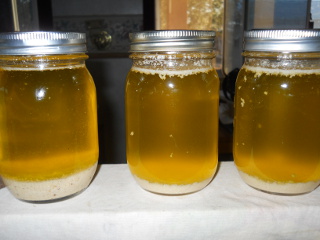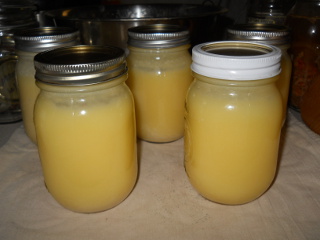Last year the neighbor family invited us over for supper. It was a nice time of great food and fellowship. Over the course of the evening, they offered us some preserved garlic to try. It was basically garlic that had been aged in vinegar – that’s it. But it was delicious! I had two all by themselves and really enjoyed them. Apparently, the preservation process makes the edgy/hot garlic taste much milder and easy to pop into the mouth and eat raw. This jogged my memory to several months ago when we originally harvested our very first garlic crop. Our friend, Mrs. Bowman, had commented that she preserves her garlic cloves in cider vinegar, honey and salt. When her husband had a case of swine flu, eating a couple of cloves a day kept her healthy to be able to care for him.
For some reason, our 2012 garlic harvest just didn’t cure correctly and most of it was unusable (that’s another blog post altogether). So when the local market had a great sale on garlic I “pounced” and bought a bunch to preserve using apple cider vinegar:
So, we separated the cloves from the bulbs and peeled them completely. Before I go on I should mention that in order to retain the full health benefits of garlic you should leave them whole and not cut or crush them when preparing for preservation. There is a component in garlic called allicin that provides its health benefits and is released when the clove is crushed or cut open. So you will want to leave the clove whole until eaten if possible:
I included this picture because one of the ladies here, Shannon, always puts such great, artistic, professional pics on her blog so I thought I’d try it. 🙂
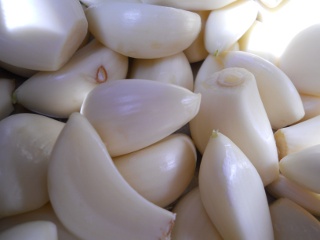
When we first started experimenting with fermenting garlic, we used a salt brine, and either didn’t wait long enough for the garlic to mellow or we just plain made a nasty batch. It tasted awful. Don’t get me wrong; using a salt brine is probably a fine way to proceed, and I’ve included a link to a great and simple recipe here. But in our home we have found that simply immersing the cloves in cheap apple cider vinegar from the store is the quickest and cheapest way to preserve garlic and have it taste great. And there is lots of room for experimentation with herbs and seasonings, but I like to keep things ultra simple. Like Mrs. Bowman, you can add honey and salt as well. Raw, organic apple cider vinegar with what is called “the mother,” like Bragg’s, is a a prebiotic, a naturally fermented food, which supports and feeds the probiotics existing in the flora of our gut, contributing to a healthier and synergistic environment in the body. But for preserving purposes we use the cheap stuff because it can get pricey otherwise.
One of our readers has provided clarification since I first posted this, in that, you achieve lacto-fermented garlic when you place the cloves in a salt brine solution. When you preserve garlic in vinegar, it basically is a pickling process. In either case, you are preserving the powerful benefits of the garlic.
Now pay attention, it gets REAAALLLLY tricky! We put the peeled, whole garlic cloves into a pint jar……..
Covered to one inch head space with cheap apple cider vinegar……then closed it up with the lid and screw top. Ummmmm, THAT’S IT!!
Mrs. Bowman said the cloves would turn blue (or green, Dave says my sense of color is kinda wacky 🙂 ) And then after a couple weeks, after they turn white again, they are good to eat. I’m glad she said that because these started turning blue-green within a day or so, and I might have thought there was something wrong; but, apparently, it’s quite normal.
Here are the cloves after one day:
And on day two:
Again on day three:
Day five:
And finally on day seven:
You can see there is an interaction dance that takes place between the acidity in the vinegar and the garlic. Then after several days at room temperature, you can move the jars to continue aging in a cool, dark, dry place like a cellar or cool room in the house. It seems that the longer it is left, the more mellow the taste. You’ll probably want to wait at least 2-3 weeks before eating, but you can experiment with time and ingredients in order to find out your personal preferred taste.
I pulled a jar from the root cellar that I prepped in February of this year, and this is what it looks like after about 3+ months. William decided he wanted to do his Vanna White impression and “present” the garlic:
Dave and I have been trying to eat a clove every day with supper (sometimes I forget, but we average probably five a week). At first he was the only one eating them, and I was kind of eyeing him when he wasn’t looking to see if he got sick or keeled over dead. He was the royal food tester and didn’t know it. 🙂 But he loved the taste, AND I noticed with delight that there is something in garlic preserved this way that does not create a lingering odor on the breath. You can sometimes smell it when the person is eating it, but that’s about it. There don’t seem to be ANY lingering breath issues!
So, we either just eat a whole clove with supper, or I cut them up and put them in our salads or other dishes (delicious!)
I am very excited with the health possibilities this provides. In my research, I have found that garlic is purported to have anti-viral, anti-bacterial, anti-oxidant properties, is effective in lowering blood pressure as well as bad cholesterol, and also provides a great general boost to the immune system. I suggest you do your own research, but Dave and I have not been sick this past flu season — I’m just sayin! (There was a day this past winter where I could tell something was trying to get at me like a cold or flu. But it just never materialized. It just kind of phhhtttffft out. I was feeling a little taxed for a day or so, but nothing serious came of it like having to miss any work or go lie down, etc.)
This is one of those cheap, easy, natural and healthy ways to keep your immune system in better shape. I would encourage you to try it! You can even use any kind of glass jar with a lid (peanut butter, mayo, etc.)
As always, we are so thankful to God for providing everything we need for good health found in His creation. And for granting us this information so we may continue to pursue a sustaining lifestyle with His help.
Susan
